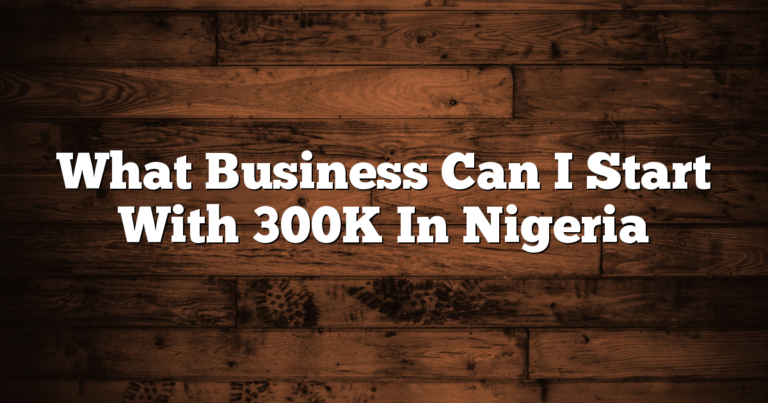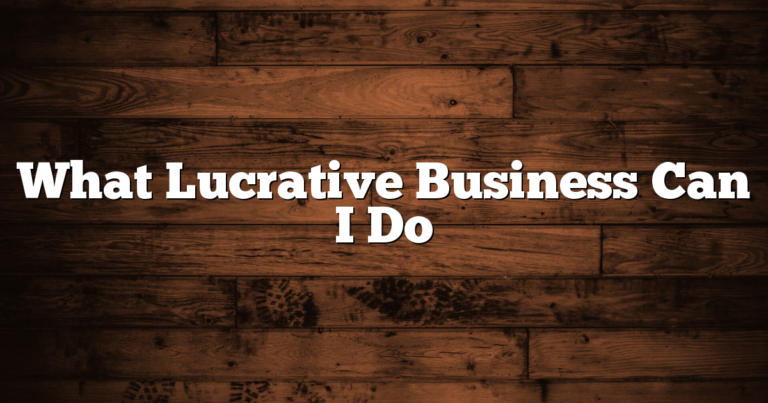How To Start Making Money From Amazon

Hey there, hustlers! Ready to dive into the world of online entrepreneurship and start raking in some serious cash? Well, look no further because today we're going to spill the beans on how to kickstart your money-making journey with none other than the e-commerce giant itself – Amazon! Yep, you heard it right, folks. We're about to unveil the secrets to making moolah from the comfort of your own home, all thanks to the power of this digital marketplace. So, grab your favorite snack, get cozy, and let's get this money-making party started!
Finding a Profitable Niche
Alright, let's talk about finding a profitable niche. Now, when it comes to starting a business or launching a new product, finding the right niche is crucial. You want to find a market that is not only profitable but also has a demand for what you're offering. So, how do you go about finding that sweet spot?
First things first, you need to do your research. Look at the current market trends and identify any gaps or underserved areas. This could be a specific demographic that is not being targeted or a product that is in high demand but has limited options available. By identifying these gaps, you can position yourself as the go-to solution and tap into a profitable niche.
Next, consider your own interests and expertise. It's important to choose a niche that you are passionate about and have knowledge in. This will not only make the process more enjoyable for you but also give you a competitive edge. When you have a deep understanding of the niche, you can better cater to the needs of your target audience and provide them with valuable solutions.
Lastly, don't be afraid to think outside the box. Sometimes, the most profitable niches are the ones that are not obvious at first glance. Look for emerging trends or untapped markets that have the potential for growth. By being innovative and willing to take risks, you can carve out a profitable niche that sets you apart from the competition.
So, to sum it up, finding a profitable niche requires thorough research, a passion for the subject, and a willingness to think outside the box. By following these steps, you can identify a niche that not only aligns with your interests but also has the potential for long-term profitability. So go ahead, dive into the world of niche hunting and find your own little corner of success!
Researching Popular Products on Amazon
So, you're interested in researching popular products on Amazon, huh? Well, let me tell you, my friend, you've come to the right place! Amazon is like a treasure trove of goodies, with millions of products just waiting to be discovered. But before you dive headfirst into the deep end, let's talk about why researching popular products on Amazon is so important.
First off, Amazon is the king of online shopping. It's like the ultimate marketplace where you can find pretty much anything your heart desires. And when you're researching popular products, you're essentially tapping into the collective wisdom of millions of shoppers. You get to see what's hot, what's trending, and what people are raving about. It's like having your own personal shopping assistant, guiding you towards the best of the best.
But it's not just about finding cool stuff to buy. Researching popular products on Amazon can also give you valuable insights into consumer behavior and market trends. You can see what features people are looking for, what price points they're willing to pay, and even get a sense of the competition. It's like peeking behind the curtain and getting a glimpse into the inner workings of the retail world.
Now, let's talk about how to actually go about researching popular products on Amazon. One of the best ways to start is by checking out the “Best Sellers” list. This is like the holy grail of popular products, showing you what's flying off the virtual shelves. You can browse through different categories, see what's trending in specific niches, and even filter by price range. It's a goldmine of information, my friend.
Another great tool to use is the customer reviews. This is where you can find real, honest opinions from people who have actually bought and used the products. You can see what they loved, what they hated, and even get tips and tricks on how to get the most out of your purchase. Just be sure to take the reviews with a grain of salt, as everyone's taste and preferences are different.
So, my friend, now that you know the importance of researching popular products on Amazon and have a few tricks up your sleeve, it's time to dive in and start exploring. Who knows, you might just stumble upon your new favorite thing or even discover the next big trend. Happy researching!
Creating an Amazon Seller Account
So, you're thinking about becoming an Amazon seller, huh? Well, let me tell you, it's a whole new world out there in the e-commerce game. But don't worry, I got your back. Let's dive into the nitty-gritty of creating an Amazon seller account and get you on your way to making some serious moolah.
First things first, you gotta head over to the Amazon Seller Central website. It's like the mothership for all things selling on Amazon. Once you're there, click on the “Register Now” button and buckle up for the ride. You'll be asked to provide some basic information like your name, email, and a password. Make sure you come up with a strong password, none of that “123456” nonsense. We don't want any sneaky hackers getting their grubby little hands on your account.
Next up, you'll need to choose the type of seller account you want. Amazon offers two options: Individual and Professional. If you're just dipping your toes into the selling game, the Individual account might be the way to go. It's free to sign up, but keep in mind, you'll be charged a fee for each item you sell. On the other hand, if you're planning on going all-in and selling a bunch of stuff, the Professional account might be more up your alley. It comes with a monthly subscription fee, but you won't have to pay those pesky per-item fees.
Once you've made your choice, it's time to get down to business. You'll need to provide some more detailed information about yourself and your business. Don't worry, it's nothing too crazy. Just your address, phone number, and some legal stuff. Oh, and if you're planning on selling products that require approval, like beauty or health items, you'll need to go through a little extra process. But hey, it's all part of the game, right?
Alright, my friend, you're almost there. Just a few more steps and you'll be an official Amazon seller. You'll need to set up your payment method and decide how you want to handle shipping. Amazon offers a nifty little service called Fulfillment by Amazon (FBA) where they take care of all the shipping and customer service for you. It's like having your own personal army of elves working behind the scenes. But if you're more of a DIY kind of person, you can handle the shipping yourself. Just make sure you're ready to pack and ship those orders like a pro.
And that's it! You've successfully created your Amazon seller account. Now it's time to start listing your products, optimizing your listings, and getting those sales rolling in. Remember, Rome wasn't built in a day, so be patient and keep hustling. Good luck, my friend, and may the Amazon gods be ever in your favor.
Setting Up Your Seller Profile
So, you're ready to dive into the world of online selling? Awesome! Setting up your seller profile is the first step towards becoming a successful online entrepreneur. It's like creating your own little corner in the vast marketplace of the internet. And trust me, you want that corner to stand out and attract customers like bees to honey.
First things first, let's talk about the importance of a killer seller profile. Think of it as your online identity, your personal brand. It's what potential customers will see when they stumble upon your products. So, you want to make sure it's eye-catching, informative, and reflects your unique style. Don't be afraid to let your personality shine through!
Now, let's get down to the nitty-gritty of setting up your profile. Start by choosing a catchy username that represents your brand. It should be memorable and easy to spell. Next, write a killer bio that tells your story and showcases your expertise. Use descriptive language to paint a vivid picture of who you are and what you offer. Don't forget to sprinkle in some keywords related to your niche to improve your visibility in search results.
Once you've nailed your username and bio, it's time to add some visual appeal to your profile. Upload a high-quality profile picture that captures your essence and makes you approachable. Remember, people buy from people they trust, so a friendly and professional photo can go a long way. You can also add a cover photo that represents your brand or showcases your best-selling products.
Now that your profile is looking fly, it's time to add some meat to the bones. Create a detailed and organized product catalog that showcases your offerings. Use HTML bullet lists to highlight key features and benefits. Don't forget to include high-quality product photos from different angles to give customers a clear idea of what they're getting. And of course, don't skimp on the product descriptions. Use elegant prose to entice customers and make them feel like they can't live without your products.
So, there you have it! Setting up your seller profile is like building your own little online empire. Put some thought and effort into it, and you'll be well on your way to attracting customers and making those sales. Good luck, and happy selling!
Listing Your Products on Amazon
So, you've got some amazing products that you want to sell, and you've heard that Amazon is the place to be. Well, you're in luck because listing your products on Amazon is easier than you might think. Let me break it down for you.
First things first, you need to create an Amazon seller account. This is where you'll manage all your product listings, inventory, and orders. It's pretty straightforward, just head over to the Amazon Seller Central website and follow the prompts to sign up. Once you're all set up, you can start listing your products.
Now, when it comes to listing your products, you want to make sure you do it right. Take some time to gather all the necessary information about your products, such as the title, description, images, and pricing. Make sure your product descriptions are detailed and accurate, highlighting the key features and benefits. You want to entice potential buyers and make them feel confident in their purchase.
Once you have all the information ready, you can start creating your product listings on Amazon. This involves filling out various fields, such as the product title, brand, category, and so on. Be sure to choose the most relevant category for your product to ensure it reaches the right audience. You'll also need to upload high-quality images that showcase your product from different angles.
After you've filled in all the necessary details, it's time to set your pricing. You can choose between two options: Fulfillment by Amazon (FBA) or Fulfillment by Merchant (FBM). FBA means that Amazon will handle the storage, packaging, and shipping of your products, while FBM means you'll handle all of that yourself. Consider the pros and cons of each option and choose the one that works best for you.
Once your product listings are live, it's important to regularly monitor and update them. Keep an eye on customer reviews and feedback, and make any necessary adjustments to improve your listings. You can also take advantage of Amazon's advertising and promotional tools to boost your product visibility and sales.
So, there you have it. Listing your products on Amazon is a relatively simple process that can open up a world of opportunities for your business. Just remember to put in the time and effort to create compelling listings that will attract buyers and make them fall in love with your products. Good luck!
Optimizing Your Product Listings
So, let's talk about optimizing your product listings. Now, I know it may sound a bit technical, but trust me, it's not as complicated as it seems. In fact, it's all about making your products shine and stand out in the crowded online marketplace. And who doesn't want that, right?
First things first, you need to understand your target audience. Who are they? What are they looking for? What problems do they have that your product can solve? Once you have a clear picture of your ideal customer, you can tailor your product listings to speak directly to them. Use language that resonates with them, highlight the benefits that matter most to them, and address any objections they may have.
Next, let's talk about visuals. We live in a visual world, my friend, and your product images need to be top-notch. Invest in high-quality photography or hire a professional if you can. Show your product from different angles, in use, or even in action. And don't forget to optimize those images for the web. Nobody likes waiting for a slow-loading page, right?
Now, let's move on to the description. This is your chance to really sell your product. Be descriptive, paint a picture with words, and make your potential customers feel like they can't live without your product. But remember, don't go overboard with the hype. Be honest and transparent about what your product can and can't do. Nobody likes feeling deceived, and it's better to underpromise and overdeliver.
So, there you have it, my friend. Optimizing your product listings is all about understanding your audience, showcasing your products with stunning visuals, and crafting compelling descriptions. Give it a try, and watch your sales soar!
Implementing Effective Pricing Strategies
Alright, let's talk about implementing effective pricing strategies. Now, when it comes to pricing, it's not just about slapping a number on your product or service and calling it a day. Oh no, my friend, it's a whole lot more than that. It's about finding that sweet spot where your customers feel like they're getting a great deal, while still making sure you're making a profit. So, let's dive into three key factors to consider when implementing your pricing strategy.
First up, you gotta know your market. I mean, really know it inside and out. Who are your customers? What are their needs and desires? What are they willing to pay for your product or service? You gotta do your research, my friend. Talk to your customers, conduct surveys, analyze your competitors' pricing strategies. Get all the juicy details so you can make informed decisions.
Next, you gotta consider your costs. I know, I know, it's not the most exciting part of running a business, but it's crucial. You gotta know how much it costs you to produce your product or deliver your service. Take into account your raw materials, labor costs, overhead expenses, and any other costs that go into the mix. Once you have a clear understanding of your costs, you can determine a pricing strategy that ensures you're not selling yourself short.
Lastly, you gotta be flexible. Pricing strategies are not set in stone, my friend. You gotta be willing to adapt and adjust as needed. Keep an eye on market trends, changes in customer behavior, and any other factors that may impact your pricing. Don't be afraid to experiment with different pricing models or offer discounts and promotions to attract new customers or retain existing ones. Remember, the key is to find that balance between maximizing your profits and keeping your customers happy.
So, there you have it, my friend. Implementing effective pricing strategies is all about knowing your market, considering your costs, and being flexible. It may take some trial and error, but with a little bit of research and a whole lot of hustle, you'll find the pricing strategy that works best for your business. Good luck!
Promoting Your Products on Social Media
So, you wanna get your products out there, huh? Well, lucky for you, social media is the place to be! It's like a virtual marketplace where you can showcase your goods to a whole bunch of potential customers. But hold up, it's not as simple as just posting a pic and calling it a day. Nah, you gotta have a strategy, my friend. Let me break it down for you.
First things first, you gotta know your audience. Who are you trying to sell to? What are their interests, their needs, their desires? Once you've got that figured out, you can tailor your social media content to speak directly to them. Use language and visuals that resonate with your target market. If you're selling skateboards, for example, you might wanna use some rad skate lingo and show off sick tricks in your videos. Get inside their heads and give 'em what they want!
Next up, consistency is key. You can't just post once in a blue moon and expect people to remember you. Nah, you gotta be in their faces (in a good way) on the regular. Create a content calendar and stick to it. Whether it's daily, weekly, or monthly, make sure you're consistently putting out fresh, engaging content. And don't forget to mix it up! Use a variety of formats like photos, videos, and even live streams to keep things interesting. Oh, and don't be afraid to show some personality. People wanna connect with real humans, not just faceless brands.
Lastly, engage with your audience. Social media is all about building relationships, so don't be a wallflower. Respond to comments, answer questions, and show appreciation for your followers. And hey, why not throw in some giveaways or exclusive discounts to keep 'em coming back for more? The more you interact with your audience, the more they'll feel connected to your brand and the more likely they'll be to spread the word about your awesome products.
So there you have it, my friend. Promoting your products on social media is all about knowing your audience, being consistent, and engaging with your followers. Now go out there and show the world what you've got!
Utilizing Amazon Advertising Services
So, let's talk about utilizing Amazon Advertising Services. Now, you might be wondering what the heck that even means. Well, my friend, it's all about using the power of Amazon's advertising platform to boost your business and get your products in front of more eyeballs. And trust me, when it comes to online shopping, Amazon is the king of the jungle.
First things first, let's break down what Amazon Advertising Services actually offers. They've got a bunch of different tools and features that can help you reach your target audience and increase your sales. One of the most popular options is Sponsored Products, where you can pay to have your products show up in search results and on product detail pages. It's like having your own little billboard right in the middle of the Amazon jungle.
But it doesn't stop there, my friend. Amazon also offers Sponsored Brands, which allows you to create custom ads that showcase your brand and multiple products. It's a great way to build brand awareness and drive traffic to your store. And if you're feeling really fancy, you can even try out Amazon's Display Ads, which let you reach customers on and off Amazon with eye-catching banner ads. It's like having your own personal ad agency, right at your fingertips.
So, why should you bother with all this Amazon Advertising stuff? Well, let me tell you, my friend, it's all about getting your products in front of the right people at the right time. With millions of shoppers flocking to Amazon every day, it's a goldmine of potential customers. And by using Amazon Advertising Services, you can tap into that goldmine and make sure your products are front and center.
But here's the thing, my friend, it's not just about throwing money at Amazon and hoping for the best. You've got to be strategic about it. You need to do your research, figure out who your target audience is, and create ads that will grab their attention. And that's where Amazon Advertising Services really shines. They provide you with all the tools and data you need to make informed decisions and optimize your campaigns for maximum impact.
So, whether you're a small business owner looking to expand your reach or a seasoned seller wanting to take your sales to the next level, utilizing Amazon Advertising Services is a no-brainer. It's like having your own personal marketing team, working tirelessly to get your products noticed. So, my friend, what are you waiting for? It's time to dive into the Amazon jungle and start reaping the rewards.
Monitoring and Analyzing Your Sales Performance
So, let's talk about monitoring and analyzing your sales performance. Now, I know it may not sound like the most exciting topic, but trust me, it's crucial for the success of your business. Think of it as keeping a close eye on your sales team's performance and figuring out what's working and what's not. It's like being a detective, trying to uncover the secrets behind your sales numbers.
First things first, monitoring your sales performance means keeping track of all the important metrics and data related to your sales. This could include things like the number of leads generated, conversion rates, average deal size, and even customer satisfaction scores. By having this information at your fingertips, you can start to see patterns and trends that can help you make informed decisions about your sales strategy.
But it's not just about collecting data, my friend. You also need to analyze it. This is where the real magic happens. By digging deep into the numbers, you can uncover valuable insights that can help you improve your sales performance. For example, you might discover that certain sales reps are consistently outperforming others. By studying their techniques and sharing their best practices with the rest of the team, you can level up your sales game.
Now, I know this may sound like a lot of work, but trust me, it's worth it. Monitoring and analyzing your sales performance is like having a secret weapon in your business arsenal. It allows you to make data-driven decisions, identify areas for improvement, and ultimately, boost your sales. So, don't overlook this important aspect of running a successful business. Embrace the detective role, dive into the numbers, and watch your sales soar.
Another post you might find useful is, How To Start Making Money From Music.
I've also written about How To Start Making Money From Twitch, so feel free to check that out, or bookmark it for later!






